

Matt Campbell
2025 Porsche 911 Carrera T review
5 Days Ago

Design Contributor
Arseny Kostromin is a professional automotive designer from Moscow, Russia.
Since childhood he’s had a passion for drawing and a love of cars, so he decided to study at the Department of Automotive Design in Moscow Polytechnic University.
After his graduation in 2008, he worked at the Renault design studio in Bucharest, Romania, where he got involved in the design of Dacia Duster Concept (2009) and the Dacia Logan II (2012-2020).
In 2010 he moved to Germany and joined the young Volkswagen design team in Potsdam, leading the design of early electric vehicle projects like the Gen-e (2013) and the Sedric (2017) autonomous shuttle.
In 2017 he started working for Genesis at the Frankfurt design studio as the Head of Exterior design, leading concept car projects like the Genesis Essentia (2018) and Genesis Mint (2019), among other production cars that have yet to be unveiled.
From 2020, Arseny is based in Berlin, running his own automotive design studio.
His work focuses on exterior design development of vehicles, and industrial design.
He undertakes projects from modern autonomous and series production electric cars and concepts, to one-off sports cars for motor racing, using a time- and cost-saving fully digital process.
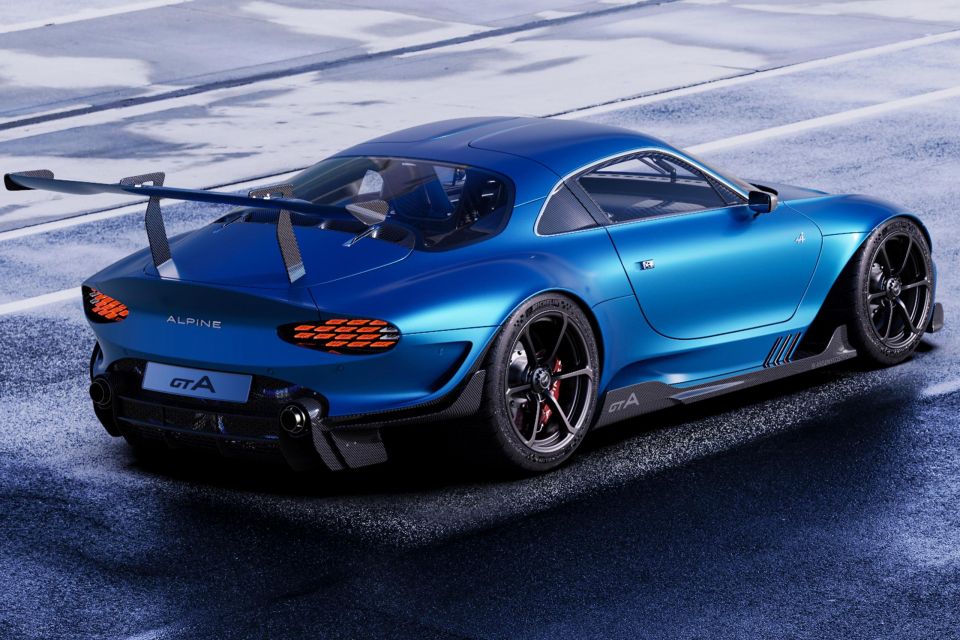
The Alpine GTA concept car is an answer to the hypothesis “what if the motor racing expertise of the Alpine F1 racing team could be combined with Alpine’s design heritage?”.
The goal was to create the ultimate driving machine with a lightweight nature, using a carbon-fibre monocoque and a mid-mounted, air-cooled flat-six engine by Gordini producing 373kW sending power to the rear wheels.
As Arseny describes it: “The Alpine GTA is tailored to the idea of efficient and lightweight construction.
“Thus, it was built from the inside out, starting from the low driving position followed by careful packaging of every technical component.
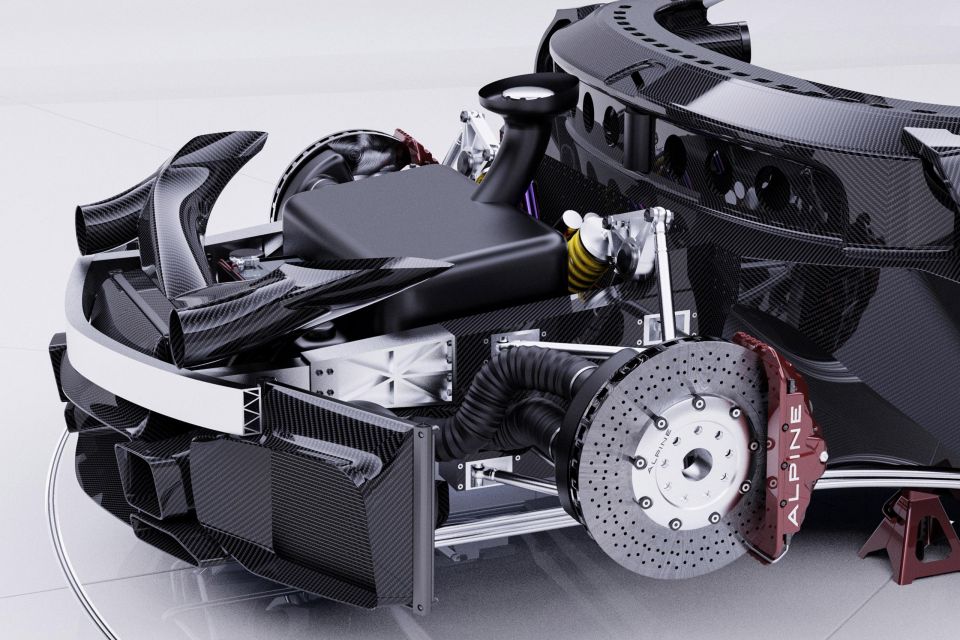
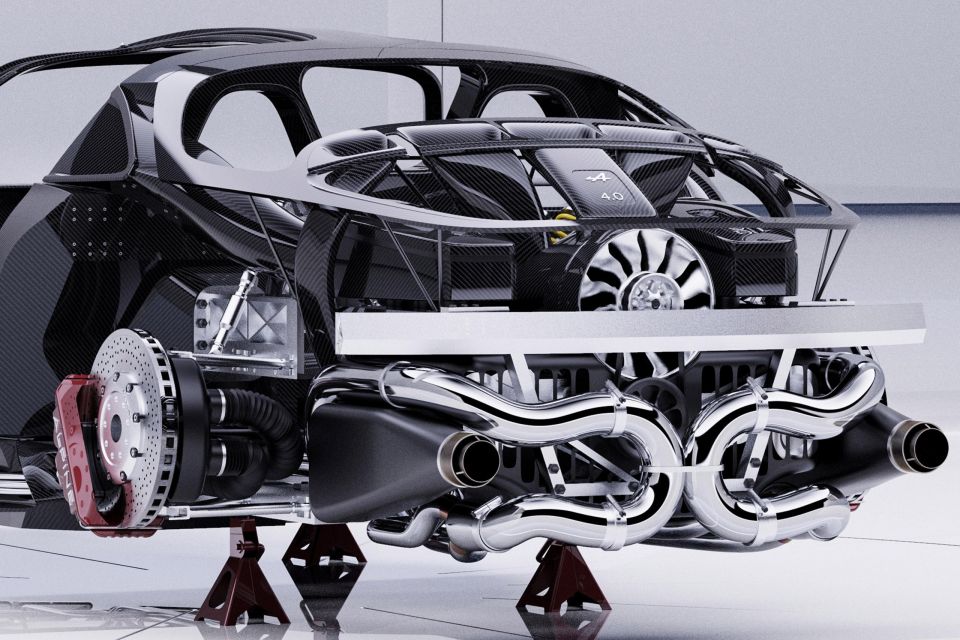
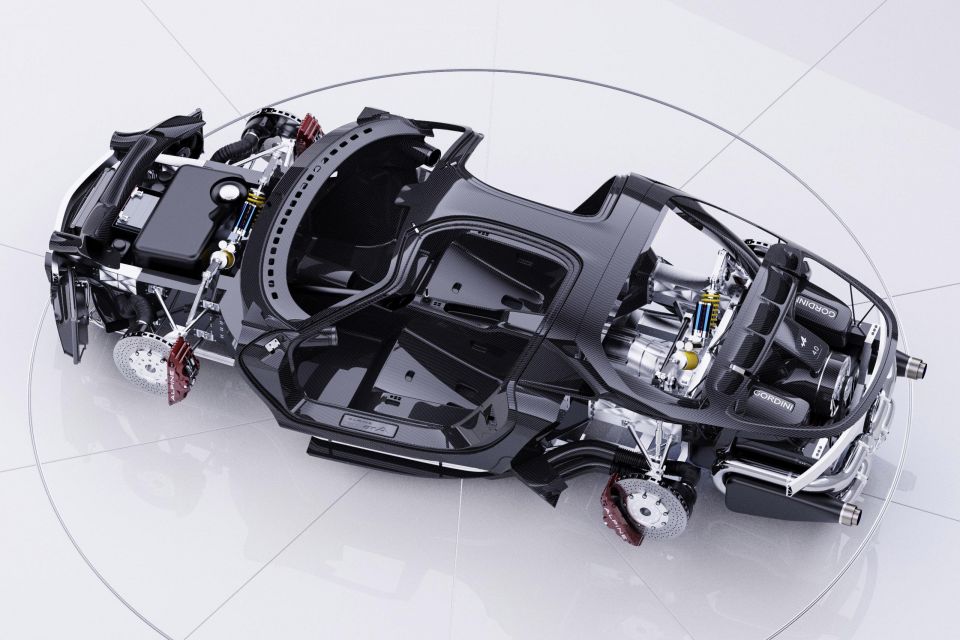
“The project includes the engineering and monocoque study, exterior and interior design. It is one of my first successful attempts to design a complete car from the ground-up.
“It is a milestone in my professional career, highlighting the ambitions of my freshly open design studio in Berlin to tackle the most complex automotive design projects.”
In terms of dimensions, the sports car measures 4115mm long, 1826mm wide and 1100mm tall.
This makes it slightly shorter, wider, and lower than the modern Alpine A110 (2017), with a lower height even than the tiny A110 Berlinette (1966). The latter is the obvious source of inspiration in terms of the proportions and styling, as the most iconic car in Alpine’s history.
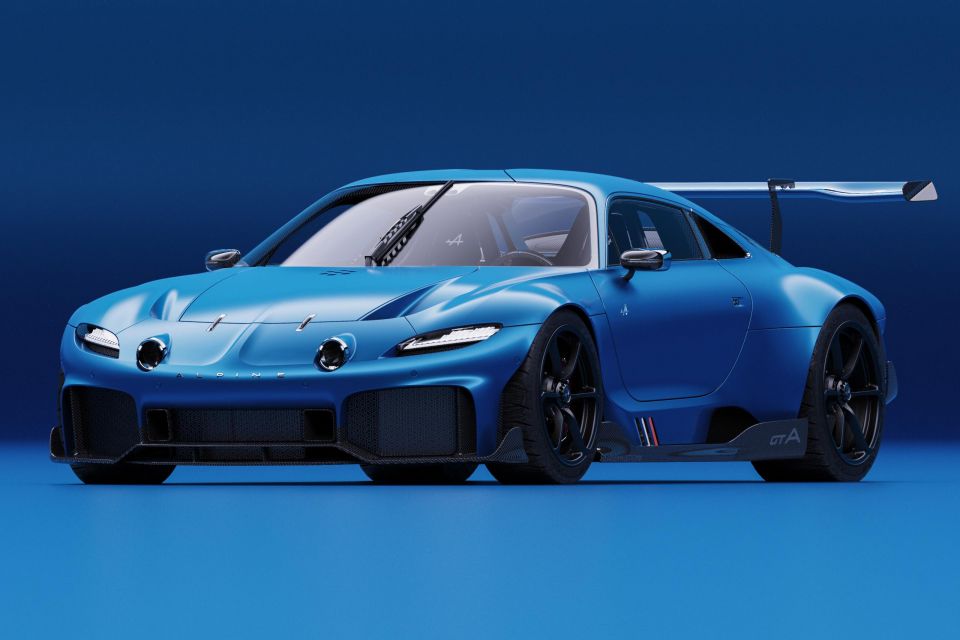
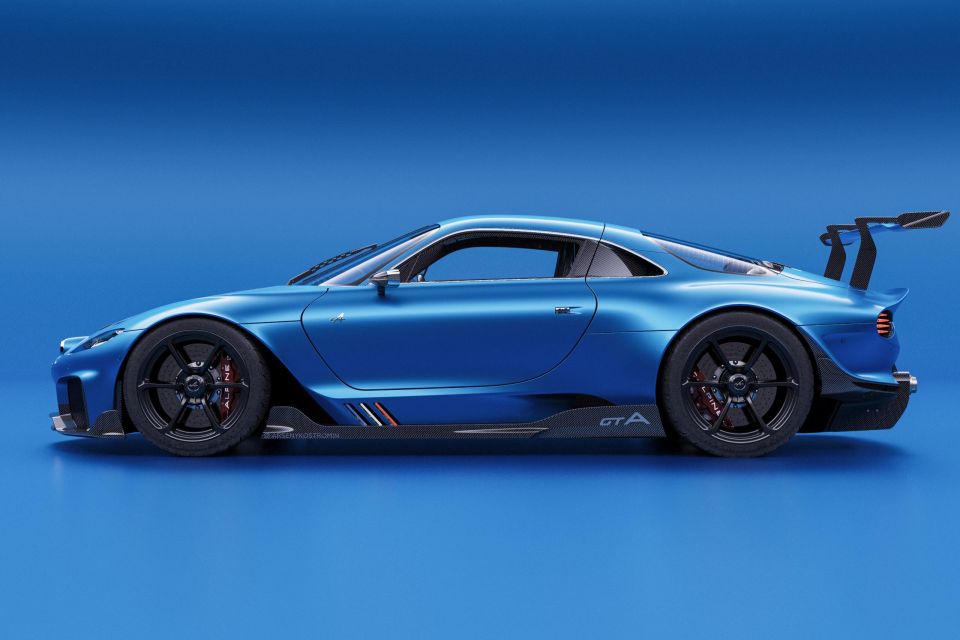
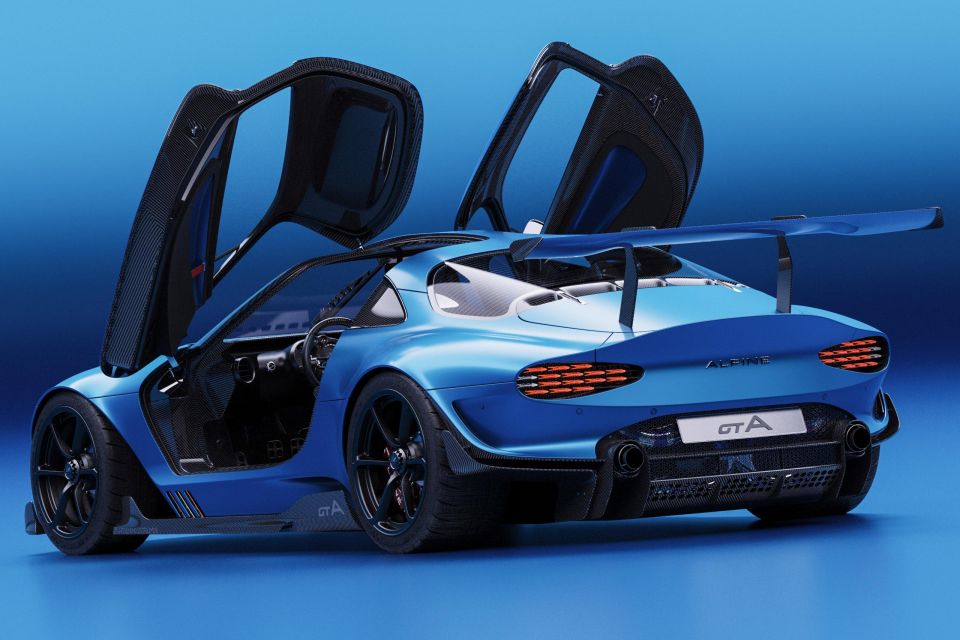
“The Alpine GTA is very puristic in its design language. Robust and monolithic aesthetics with minimum lines, only keeping those that define the architecture of the car.”
From the side, the connection with the past is immediately evident. The car maintains a short wheelbase with a long rear overhang, even though the engine is now mid-mounted instead of rear-mounted.
The curves of the wheel arches, the low waistline, the sloping roofline, and the dropping tail are clear nods to the A110 Berlinette. The overall silhouette is instantly recognisable while being a lot more aerodynamic and adopting a very modern, pure surfacing approach.
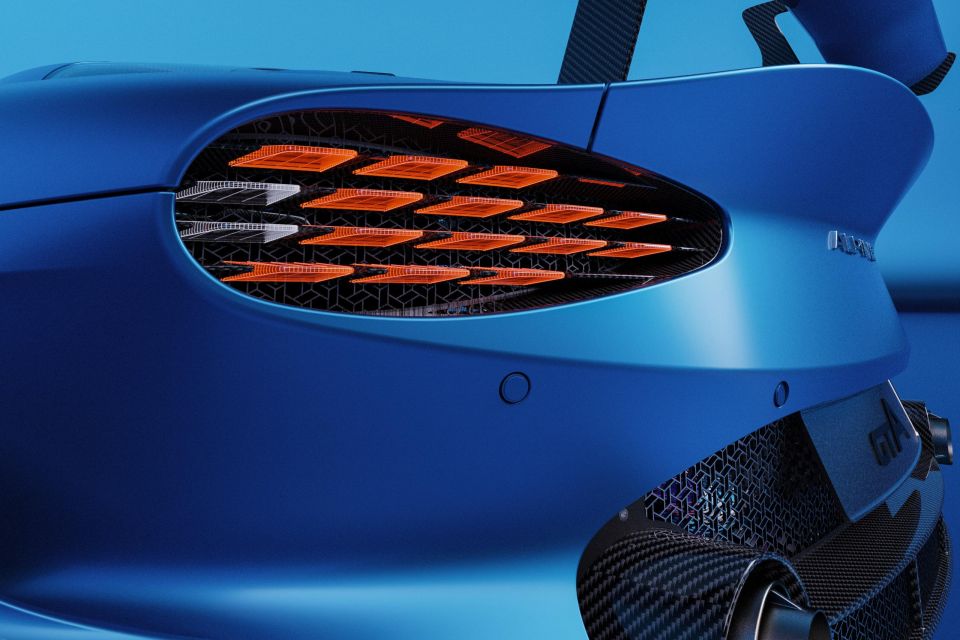
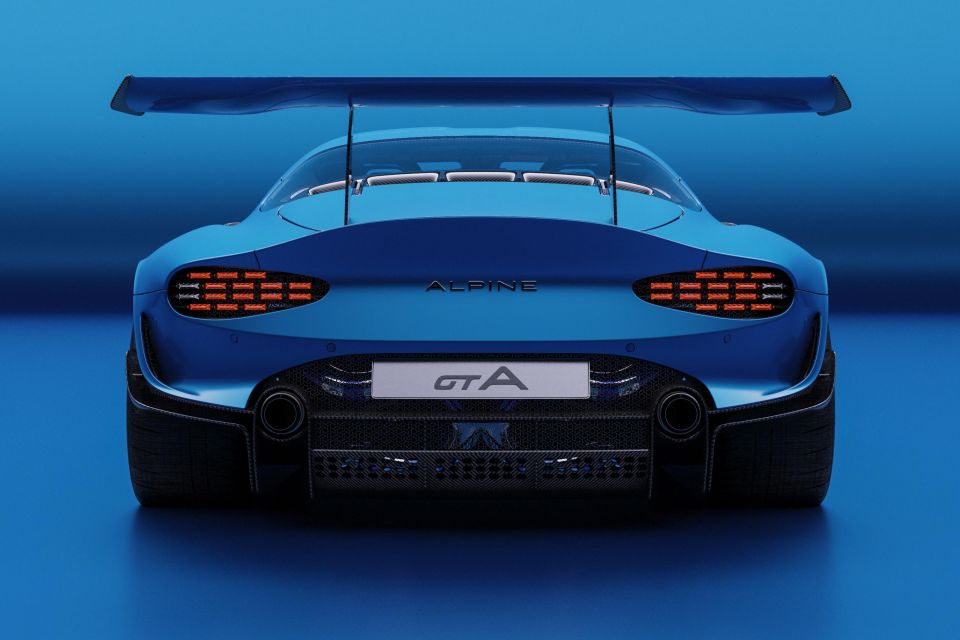
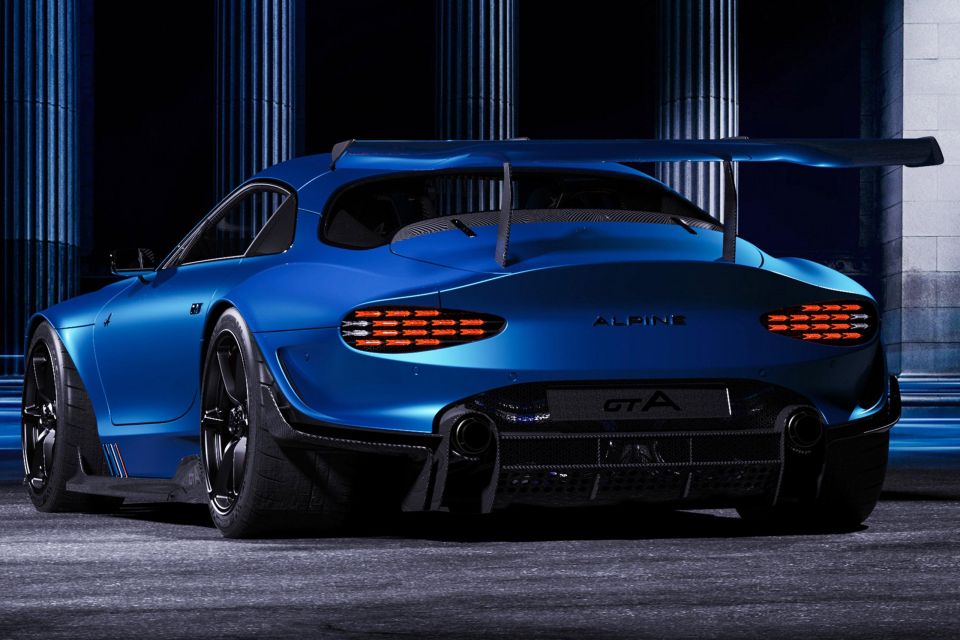
We also have butterfly doors, opening with a part of the roof for easier access to the interior. The only thing missing is the dropping character line found on every A110, with the GTA designer opting for a cleaner approach in surfacing.
As a modern sports car, the wheels are a lot larger in diameter compared to the original A110. More specifically we have 18-inch rims with 245/30R18 tyres at the front, and 19-inch units with 315/30R19 tyres at the back.
They feature a double three-spoke design with black finish, revealing the huge ventilated brakes with red calipers.
The beautiful curves on the front and rear fenders make the wheels look more tightly fitted, covering the wide tracks as a signature design element of this concept.

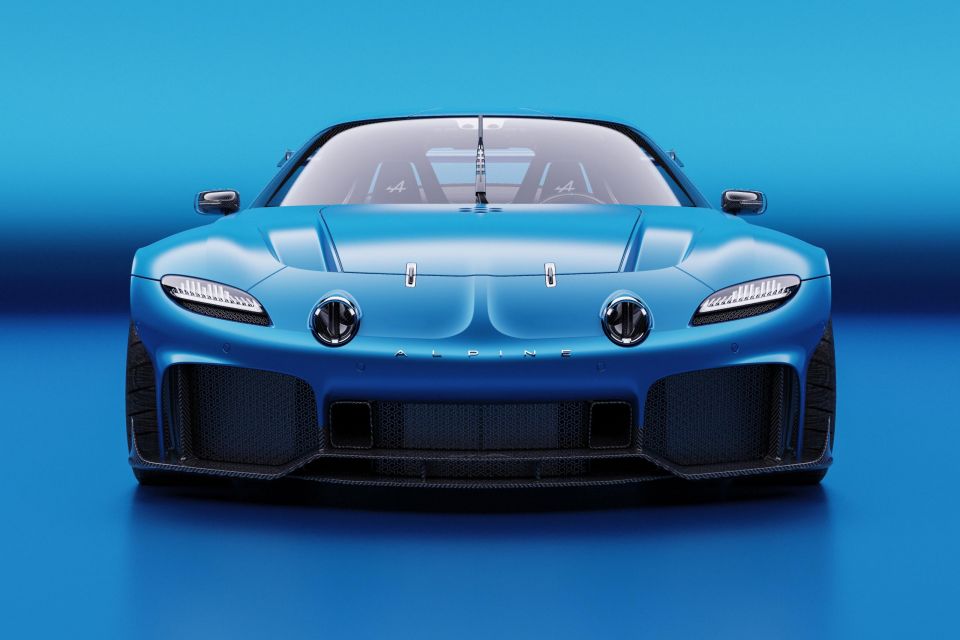
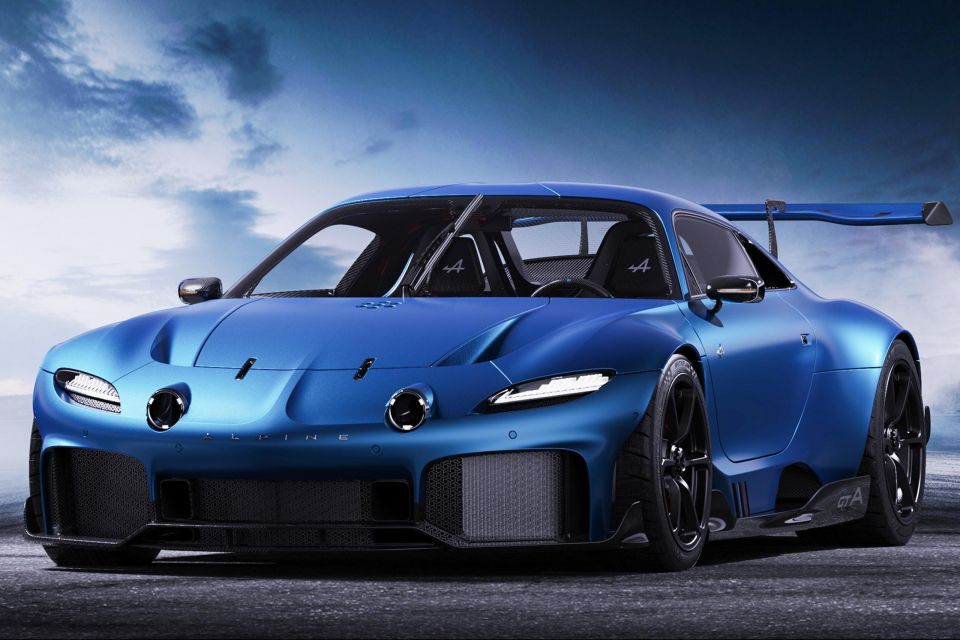
The aggressive aero package reveals the connection with the world of motorsports and looks like it came right out of a DTM racer.
It includes a front splitter, side sill extensions, a large diffuser and a huge rear wing, all made of carbon-fibre. Besides producing maximum downforce, those parts split the car visually, giving it a more purposeful and planted look.
At the front, the bumper is defined by three large and fully-functional air intakes for the radiators, above the two-storey splitter. Integrated fins and a small recess on each side of the bumper enhance the aggressive stance while adding visual lightness.
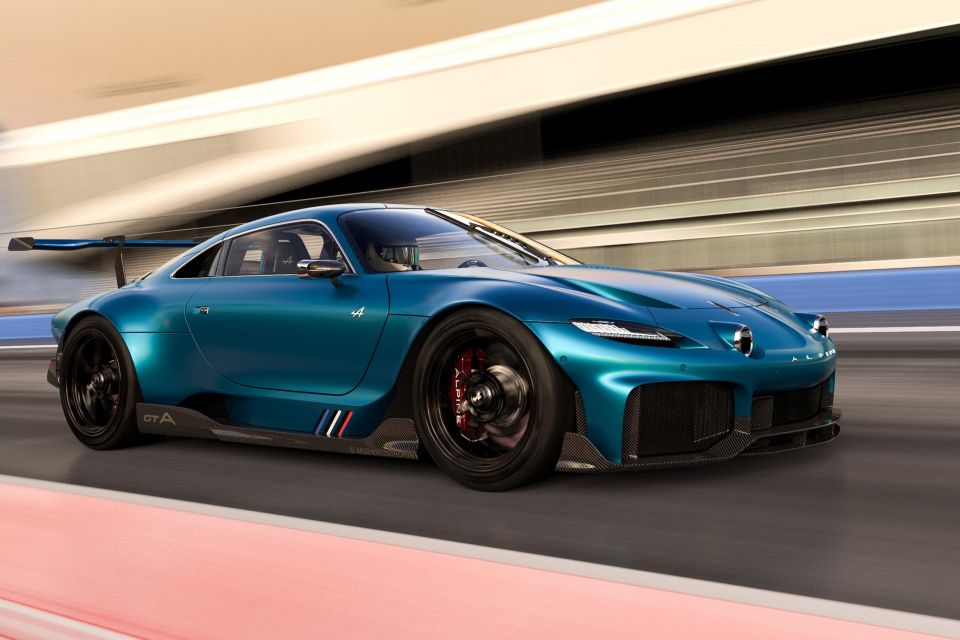
The characteristic round daytime running lights finished in chrome are protruding from the nose like old-school racing lights. In combination with the central “spine” right above the Alpine lettering they make it clear this is a descendant of the A110.
A different approach was used for the main headlights, featuring an elongated shape with modern LED graphics.
Two deep bonnet scoops allow air to escape, while the double metal hood latches are a beautiful retro touch. The curved windshield has a single wiper at the centre.
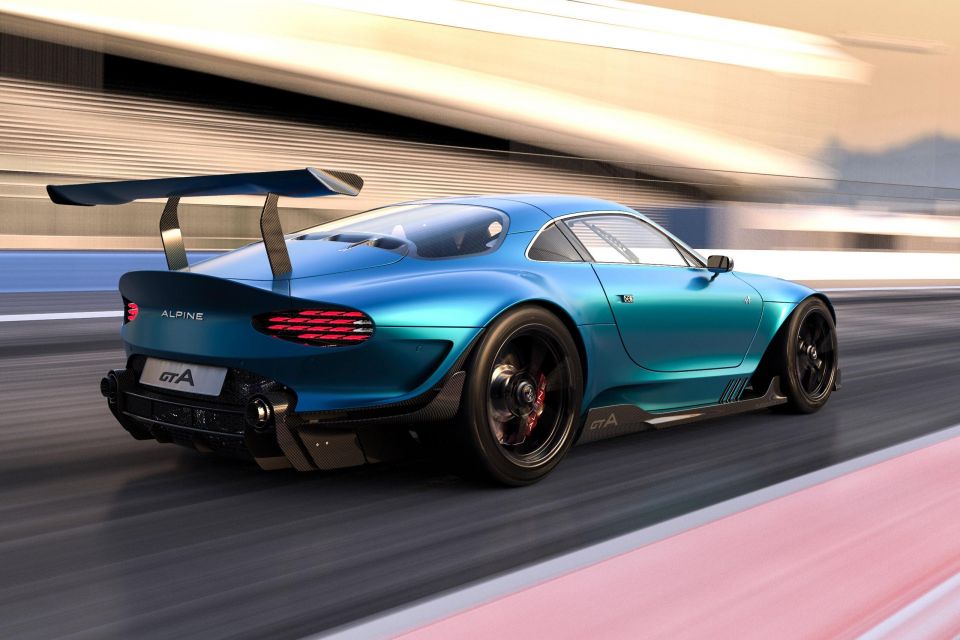
Moving over to the back, there’s a heavily-inclined wraparound rear windshield with integrated air intakes that has evolved into a signature for Alpine, and an aggressively sculpted cutout for the tail.
The shoulders are heavily pronounced bringing more emphasis on the 19-inch rear wheels that are quite large compared with the body.
The curves of the rear fenders merge with the central bulge on the tail, which is a continuation of the sloping roofline.



The taillights consist of multiple LED units inside two openings with a teardrop shape. The rear deck fades into an integrated ducktail spoiler, while also serving as a base for the massive fixed rear wing.
Below, we find a quite complex opening with mesh around the licence plate revealing some of the underpinnings, two titanium round tailpipes from Akrapovic, and a two-storey diffuser.
On each side the carbon fins emphasise the high cut on the rear bumper and expose the wide tires. Two additional side openings and the Alpine lettering in the middle round-up the design of the tail.
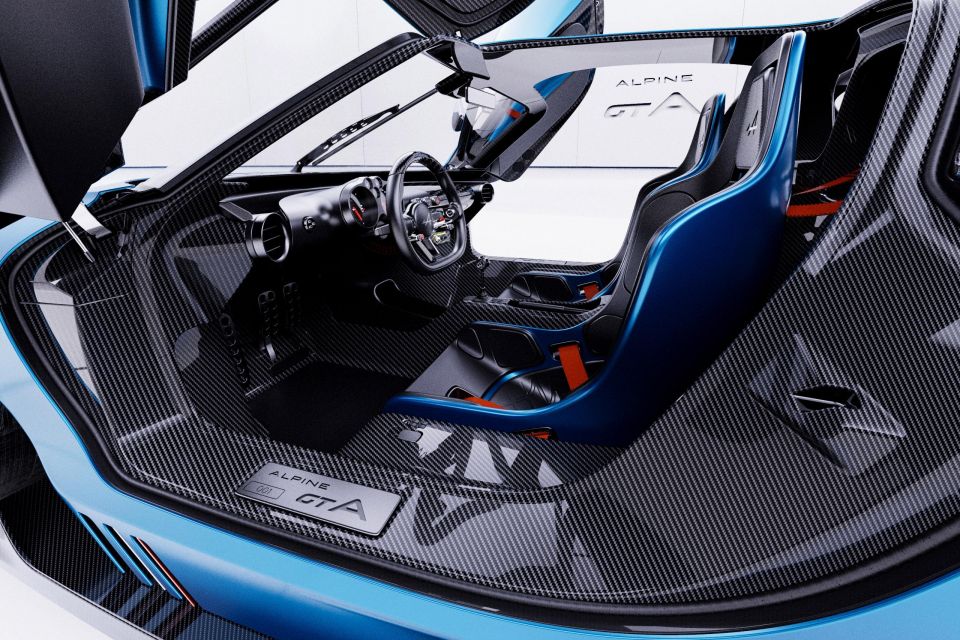
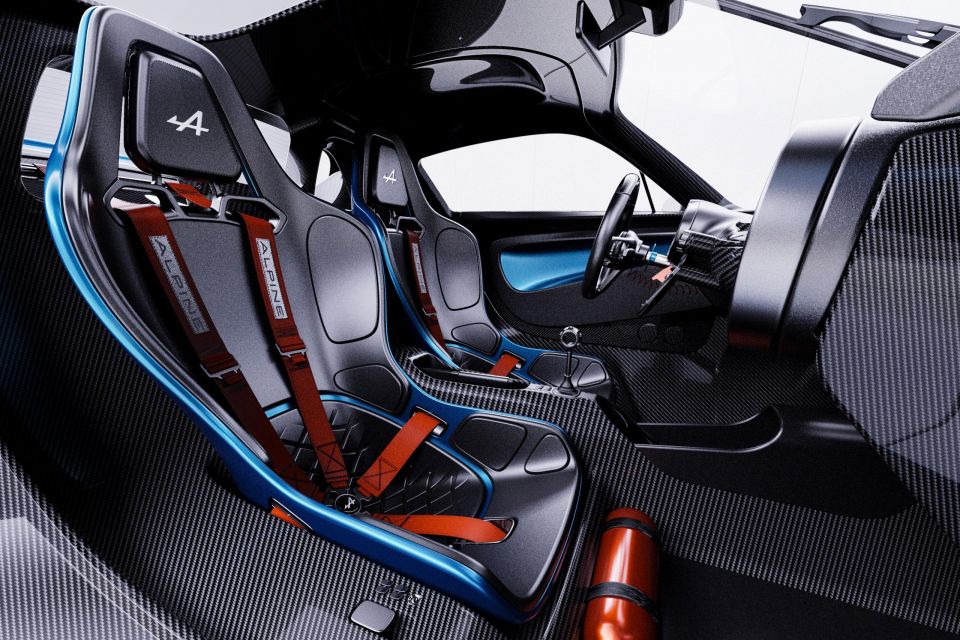
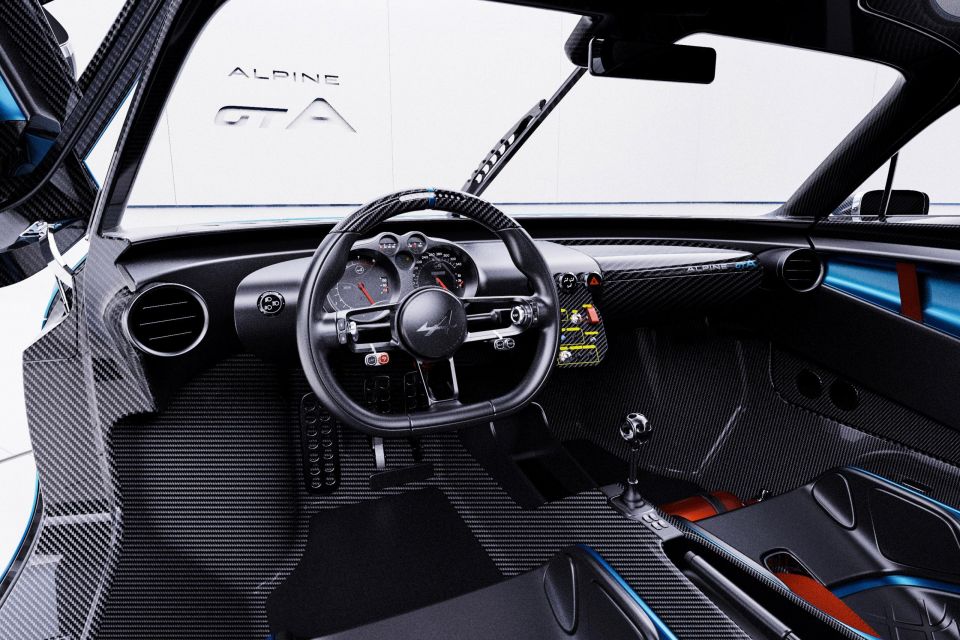
The exotic butterfly doors opening upwards together with a large section of the roof reveal a spartan interior on par with the motorsport heritage. The two-seater cabin is full of carbon fibre (exposed monocoque), with small touches of colour and black leather trim.
The racing bucket seats with body-coloured backs and five-point harnesses, have the Alpine badge on the integrated headrests. The removable flat-bottom three-spoke steering wheel has integrated controls for quickly adjusting the driving dynamics while driving (brake balance, engine mapping, lap timer etc).
Behind it we find a fully-analogue instrument cluster – the only screen you will find inside the Alpine GTA is a sliding screen on the middle of the dashboard, showing telemetry data.
The dashboard houses the climate vents and controls with a slim design. The small centre console in the middle is tilted towards the driver, housing switches for the ignition, ABS control and wiper.
The gearbox shifter on the central tunnel, is milled from a solid block of aluminium, and behind it there is a manual handbrake.
The fire extinguisher on the passenger side is another testament of the nature of this car which would mostly be driven with racing helmets on inside the track.
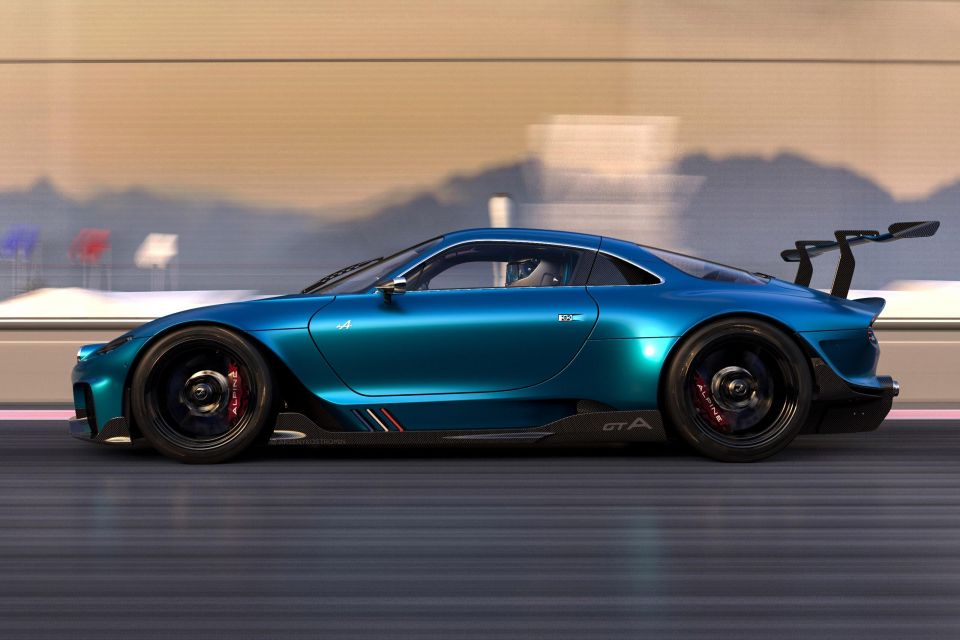
The Alpine GTA is one of the most detailed and well-thought independent design studies you’ll come across. It’s designed in such a great detail it looks more like a finished product than a digital concept.
Unlike most designers, Arseny didn’t limit himself in the design of the exterior panels and the cabin layout.
Instead, he created a detailed model of the chassis and every single mechanical component (engine, brakes, suspension etc) supporting his vision and working out the packaging in a very professional way.
Design-wise, the GTA is a clear homage to the Alpine A110 (1961-1977), with a more puristic and track-focused approach than Alpine’s modern A110 (2017-present).
However, it retains most of the signature design details, petite dimensions, and instantly-recognisable proportions of the original matched with sexy curves, clean surfacing, and modern aero.
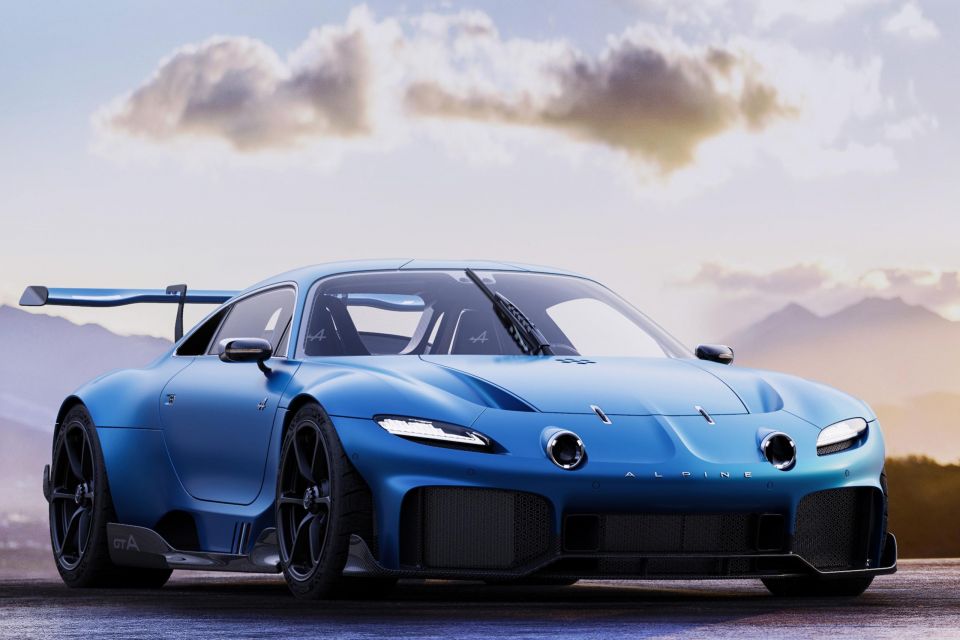
Arseny’s concept proposes an alternative future for Alpine which will become the new performance brand of the Groupe Renault, utilising the expertise of the homonymous F1 team in an exotic sports car.
His Alpine GTA may look and sound amazing for the vast majority of petrol heads, however the business of a sub-brand like Alpine would only make sense in regards to large sales volume.
That means we should expect more electric SUVs with bodykits and improved driving dynamics, and less mid-engined gasoline-powered cars with custom carbon monocoques and exotic looks that would work best in limited production.
If you liked the Alpine GTA, you can follow Arseny Kostromin on Instagram and check out his website.
The Alpine GTA was independently designed as a free-time project and is not associated with Groupe Renault.

Where expert car reviews meet expert car buying – CarExpert gives you trusted advice, personalised service and real savings on your next new car.


Matt Campbell
5 Days Ago


James Wong
4 Days Ago


Max Davies
3 Days Ago


Josh Nevett
2 Days Ago


Josh Nevett
1 Day Ago


William Stopford
15 Hours Ago